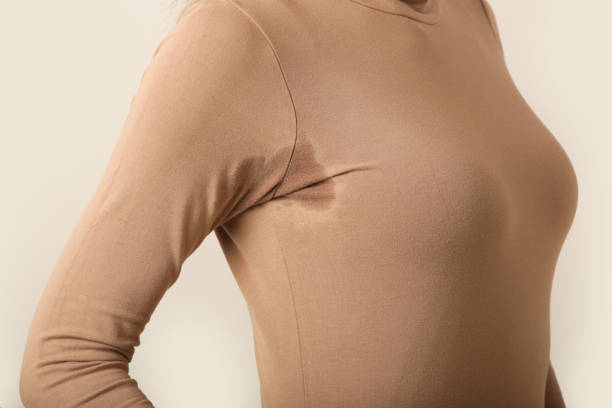p>Removing sweat stains from shirts can be a daunting task, especially if the stains are old and set-in. However, with the right techniques and materials, you can effectively banish these unsightly marks and restore your shirts to their former glory. In this article, we’ll walk you through several tried-and-true methods for eliminating sweat stains, so you can keep your wardrobe looking fresh and clean.
Understanding Sweat Stains

Sweat stains are typically caused by a mixture of perspiration, body oils, and the chemicals found in antiperspirants and deodorants. These stains often appear yellowish on light-colored shirts and can be quite stubborn to remove. Knowing the cause of the stains helps in targeting the right cleaning method and ensures you choose the most effective solution.
The acidity in sweat and the aluminum compounds in deodorants interact with fabric fibers, leading to discoloration over time. This process is accelerated by heat, making the stains even more challenging to remove if a shirt has been through a dryer cycle. Understanding this chemical interaction can be pivotal in selecting the appropriate stain removal method.
Pre-Treatment Methods
Before you toss your stained shirt into the washing machine, consider applying a pre-treatment technique to break down the sweat stains. One highly effective method is using a mixture of baking soda and water. Create a paste by combining equal parts of baking soda and water, then apply it directly to the stain.
Another option is to use a solution of white vinegar and water. Mix one part vinegar to two parts water and soak the stained area for around 30 minutes. This solution helps break down the oils and compounds responsible for the stain.
For more stubborn stains, try using hydrogen peroxide. Apply it directly to the stain and let it sit for about 30 minutes before washing. Be cautious with colored fabrics, as hydrogen peroxide can act as a bleach.
The Best Washing Techniques
Once you’ve pre-treated your shirt, the next step is to wash it properly. Use cold or lukewarm water as hot water can set the stain. Choose a high-quality detergent that is designed to break down oils and organic compounds. For added effectiveness, opt for a detergent that contains enzymes.
When washing, it’s advisable to utilize the gentle cycle to prevent fabric damage. Resist the temptation to use fabric softener, as it can lock in the stain. Instead, add half a cup of white vinegar during the rinse cycle to help remove any remaining residues.
If the stain is still visible after washing, repeat the pre-treatment and washing steps before drying. It’s critical not to dry the shirt if the stain is still present, as heat can set the stain permanently.
Drying Techniques
Proper drying techniques can make a considerable difference in the final appearance of your shirt. Air drying is the best option for stained garments. Hang the shirt outdoors in direct sunlight if possible, as sunlight acts as a natural bleaching agent and can help fade any residual discoloration.
If air drying outdoors is not feasible, consider hanging the shirt in a well-ventilated area indoors. Avoid using a dryer until you’re confident the stain is completely removed, as the heat will set the stain. Once the shirt is dry, observe the stained area under good lighting to ensure that the stain is gone.
Long-Term Maintenance Tips
To prevent future sweat stains, consider using an anti-stain deodorant that doesn’t contain aluminum compounds. Another effective strategy is to wear an undershirt which acts as a barrier between your skin and the outer shirt.
Regularly treat your shirts with a pre-wash stain remover before laundering, especially if you notice sweat stains starting to form. This proactive approach can help keep stains from setting in and becoming more challenging to remove.
Implementing a thorough washing routine with effective products and air drying can significantly extend the life of your shirts and keep them looking new for longer.
Conclusion
Removing sweat stains from shirts doesn’t have to be a complicated process. With the right pre-treatment techniques, washing methods, and drying practices, you can effectively eliminate these unsightly marks. Consistent long-term maintenance is also key to preventing future stains and keeping your wardrobe in pristine condition.
FAQs
-
Can sweat stains be permanent?
While sweat stains can be challenging to remove, they are not necessarily permanent. Using the proper techniques and pre-treatments can help lift even older, set-in stains.
-
Is it safe to use bleach on sweat stains?
Bleach can be effective on white shirts but should be used with caution. Overuse can weaken the fabric and lead to yellowing over time.
-
Can I prevent sweat stains by switching deodorants?
Yes, using a deodorant free of aluminum compounds can help reduce the occurrence of sweat stains. Opting for antiperspirants labeled as ‘anti-stain’ can also be beneficial.
-
Does baking soda harm the fabric?
Baking soda is generally safe for most fabrics and is a natural, gentle abrasive that can help lift stains without causing damage to the material.
-
How often should I wash my shirts to avoid sweat stains?
Regular washing after each use can help prevent sweat stains from setting in. Treating the underarm areas with a stain remover before each wash can also mitigate the risk of stains.